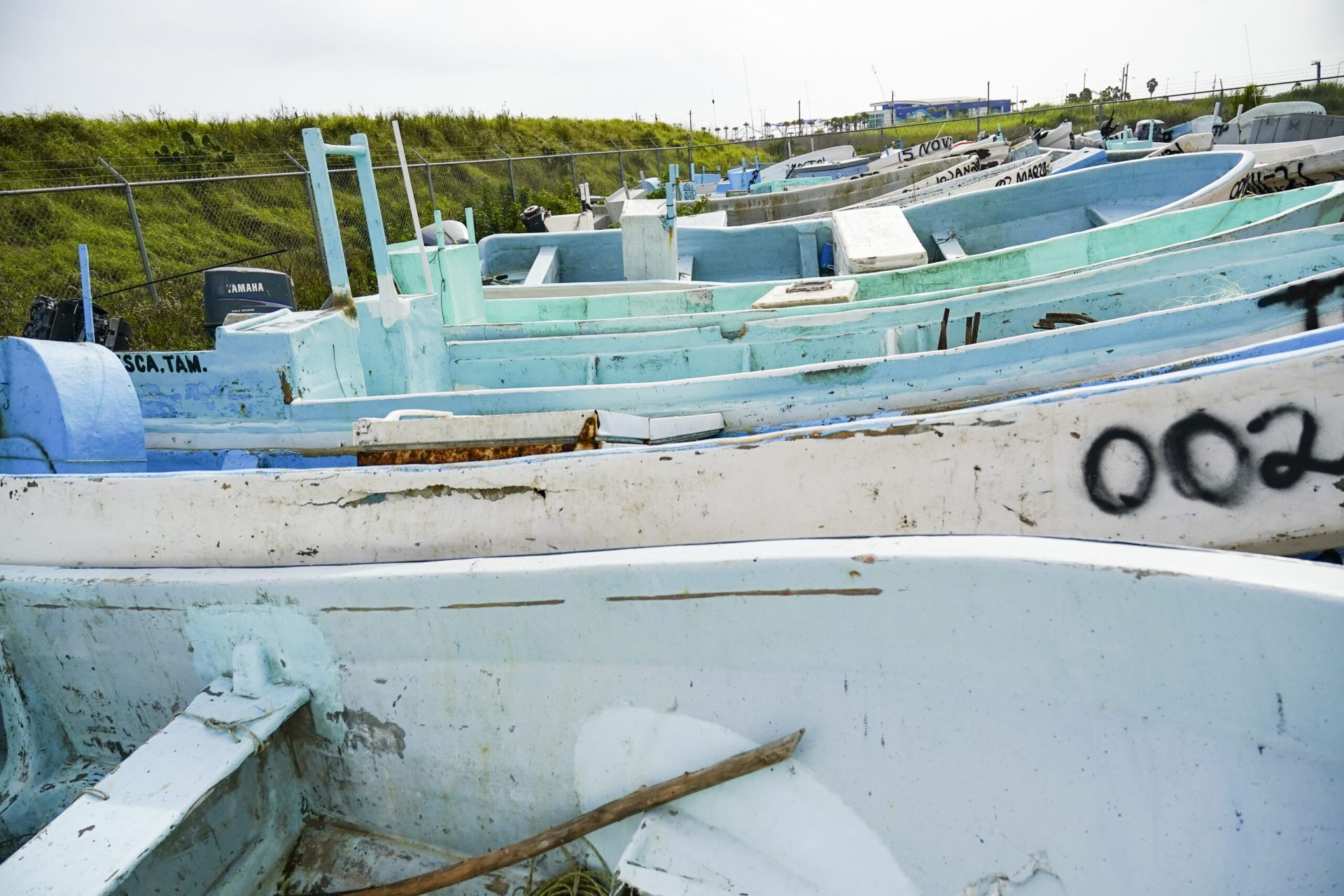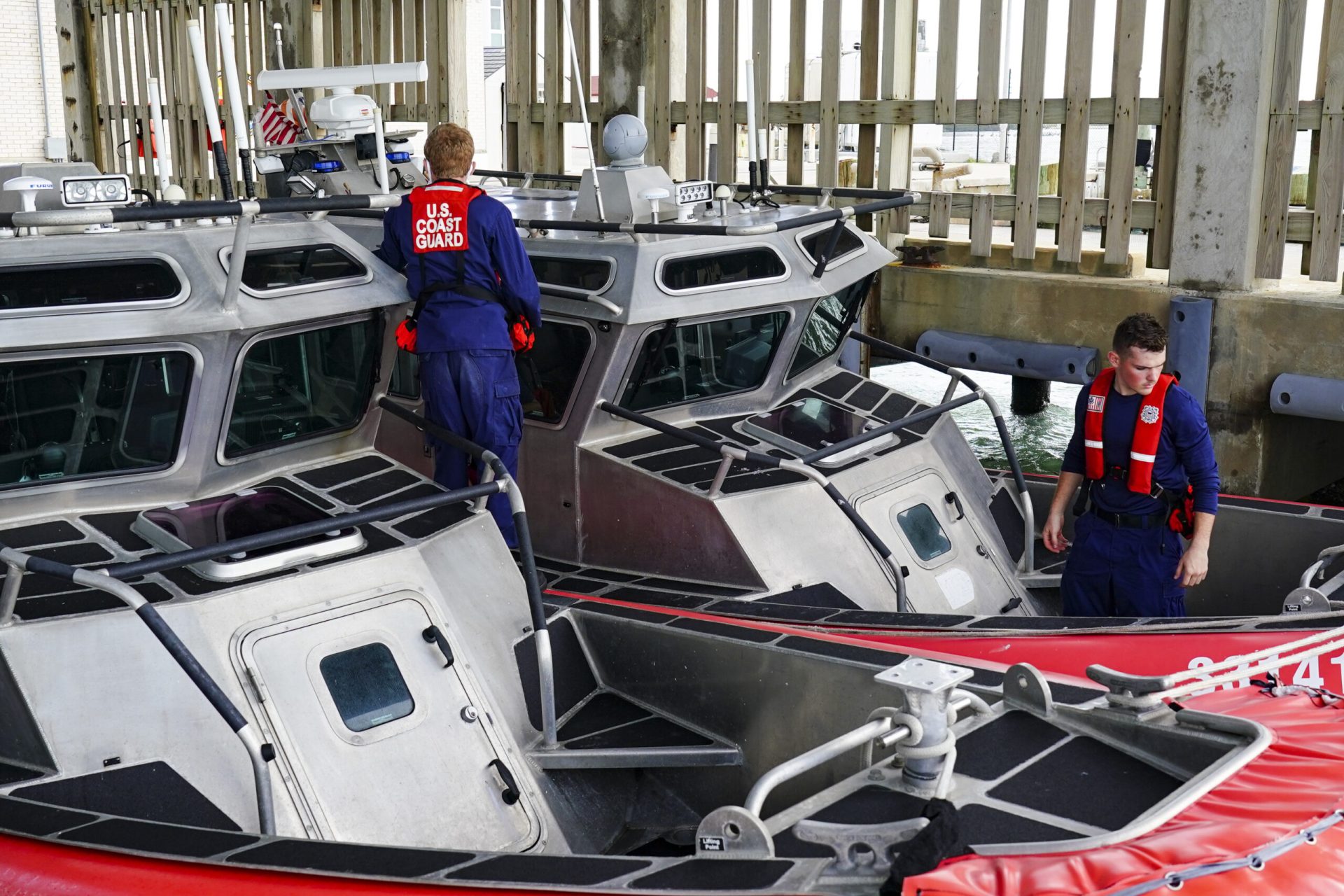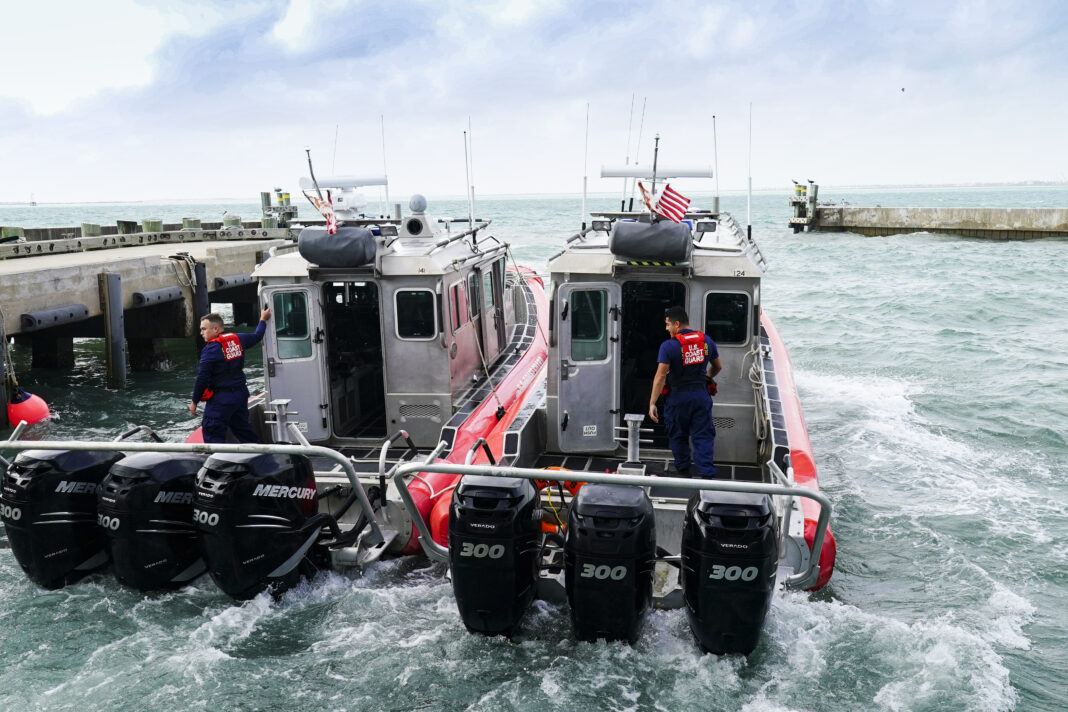The fruits of the sea are in high demand and consumers just can’t seem to get enough.
It seems to be especially true of the delectable, firm-fleshed red snapper, perhaps the most highly sought fish along the Texas gulf coast.
And where there’s demand, there’s money to be made, and legal niceties don’t apply.
U.S. Coast Guard officials say they interdicted 78 Mexican lanchas, 20- to 30-foot open boats powered by outboards, fishing illegally in U.S. waters last year. For some perspective, in 2010, Coast Guard interdictions totaled 10.
Texas Parks and Wildlife Department game wardens partner with the Coast Guard enforcement effort, and in the past two years have chased 45 lanchas fishing illegally off the Texas coast back into Mexican waters.
Lt. Cmdr. Daniel Ippolito commands Coast Guard Station South Padre Island, and he’s the tip of the spear when it comes to the war against illegal fishing. He says the past three years “have been record-breaking years.”
“It can threaten our security, our sovereignty, and we can’t let that go unchecked,” Ippolito said. “And then environmentally, too, some of the nets they use wouldn’t pass any standard we would hold for our fishermen. There’s a lot of bycatch in those nets — sea turtles, dolphins and shark just get caught up and are deceased by the time we pull them up.”
Impact on fishery
Red snapper in Texas and U.S. waters, which begin nine miles off the Texas coast, are highly regulated and have been the focus of a long-running effort to rebuild stocks for both recreational and commercial fishing in U.S. waters.
Just how much impact illegal Mexican fishing is having on red snapper stocks here is anybody’s guess.
“The biggest problem is the amount they’re taking is unknown, because they don’t report it,” said Mark Fisher, science director for TPWD’s Coastal Fisheries Division. “So we really have a hard time assessing the true impact, because we don’t know the magnitude.”
“Red snapper is what they seem to be targeting and those are under strict limits on this side of the U.S. border,” he added. “While they’re healthy, there’s been an attempt over the past several years to rebuild the stocks and they’re in really good shape right now. But that’s because of these strict limits, and they’re just running roughshod over that.”
David De Leon is president of the Rio Grande Valley Chapter of the Coastal Conservation Association, and he’s seen first-hand the cultural differences between the United States and Mexico when it comes to husbanding natural resources.
“I was in Tampico, Mexico, two years ago and I actually got to watch the fish market,” he recalled. “We were there to buy some shrimp, and I was just blown away by the quantity of fish that they pull out of the water, no matter what size it is, no matter what species it is, there are no regulations in Mexico.”
“And they sell everything they want to sell, everything from snook that were oversized here in the United States to baby snook that were no more than a few inches long all the way to red snapper, redfish, to trout, shrimp, they had it all there,” he added. “It was very interesting but it was also very sad.”
Lanchas
The Coast Guard and Texas Game Wardens are on constant lookout for the low-profile lanchas which enter U.S. waters to set gill nets and long lines that can be up to a mile in length and are known as indiscriminate killers.
The boats the Mexican poachers use are relatively simple, open craft with fiberglass hulls powered by an outboard motor. The hulls can be purchased for roughly around $3,000, and outboards are anywhere from $5,000 to $10,000.

As watercrafts go, they’re relatively cheap, an important consideration since if they’re caught by the Coast Guard or TPWD, they are taken ashore and destroyed.
For the financiers of the Mexican crews fishing illegally in U.S. waters, that’s just part of the cost of doing business, some say.
“My assumption is they’ve got to have some kind of financial backing,” De Leon said. “The guys who are coming across to catch fish, they’re being paid by somebody to do that. Those people that are paying them have got to have some kind of money where they’re re-investing into this boat, into this motor, into the gear, the fuel, to go back out once they’re caught, and do it again.”
They may be carrying more cargo than just fish, which may be a factor in their financing.
“The lanchas since I’ve been here it’s all been fish,” said Ippolito. “However, those types of vessels have been known to smuggle drugs and people in the past.”
Home port
One of the most frustrating aspects for law enforcement is, after being apprehended by the Coast Guard or game wardens, the suspects are released to the U.S. Border Patrol and taken to a port of entry, where they are released back into Mexico with no real consequences.
Their only losses are their boats and a couple days’ work.
Then they make their way back to their home port, which is Playa Baghdad, nine miles south of the mouth of the Rio Grande, to start the whole process over again. It’s a spot which also is known as a staging area for drug cartels to ship their product north.
Here’s how a National Public Radio reporter described the place in a story last summer.
“Four hundred fishermen live here in wooden shanties. Marine rope and gill netting is strewn about. Yellow curs chew on fish guts. Fiberglass boats — white with blue hulls — are pulled up on the sand.”
The 1982 UN Law of the Sea Convention stipulates foreign fishermen caught in a nation’s waters, even if arrested for fishing illegally, must be released and returned to their home country.
“It is very frustrating that this happens, and there’s really nothing we can do on our end,” De Leon said. “We’ve crippled the Coast Guard; we’ve crippled the Border Patrol and Customs agents and the Texas Game Wardens, everybody that mans that coastline.”
“I’d like to see, if it’s possible, to make it harder for these guys to come across,” he added.
Pursuit
Capt. Chris Dowdy is a Texas Game Warden who has nine wardens assigned full-time in Cameron County to the battle against Mexican vessels fishing illegally.
Dowdy says hunting for lanchas in U.S. waters isn’t as easy as it might look.
“They’re difficult to spot from the sea, for sure,” Dowdy said. “You usually have to be within a mile or mile and a half to actually be able to see them. If an aircraft is up, they have the ability to see them better than we can on the water, obviously.”
TPWD doesn’t have any of these aircraft to deploy, but the Coast Guard’s Air Station Corpus Christi does.
Dowdy is grateful for the close partnership between Coasties and game wardens because it’s “almost like having a whole other group of game wardens for marine enforcement.”

In addition to turning back 45 lanchas in the past two years, Texas Game Wardens have seized 32.23 miles of gill nets and longlines that were illegally set.
“A typical interdiction of a lancha is usually a several mile pursuit on water and they end up getting back to international waters where we can’t do anything to them,” Dowdy said. “We will try to mark where we first saw them and try to call Coast Guard and see if maybe somehow we can get a unit that can cut them off before they get back to international waters.”
“But if we actually are able to get close enough to apprehend, that’s a different story altogether,” he said. “We hail them to shut the motor down and stop, and depending on what vessel we are in, we sometimes will get right up alongside of them and tie off to them and stop them that way.”
Dowdy said the wardens have a special operations group with techniques to foul the outboard motor’s propeller on the illegal boat, stopping it dead in the water.
“I will tell you a couple of weeks ago we made an apprehension of four suspects, or four fishermen, that were coming back from just north of Highway 4 on Boca Chica, and our boat did apprehend them, actually ran them aground is pretty much what happened, on the first bar, and my wardens were able to make the arrest …,” Dowdy said.
“They had been apprehended the same week by Coast Guard about four days earlier in a different boat,” he added.
Diplomatic stalemate
Earlier this year, the National Oceanic and Atmospheric Administration, which regulates fishing in U.S. waters, wrote Congress saying that due to continuing illegal and unregulated fishing in U.S. waters, it was issuing a formal sanction which means Mexican fishing vessels are restricted from using U.S. ports.
It will hardly slow the speedy lanchas, which don’t enter U.S. ports anyway. But it could mean eventual sanctions on Mexican seafood exported to the United States, although diplomatically that seems unlikely.
And what about U.S. consumers with a taste for the white-fleshed gulf red snapper? Well, the joke may be on us.
Commercial red snapper fishing in U.S. waters, as well as Texas waters, is highly regulated, consisting of a complex licensing and quota system which seems to be working since the red snapper population in U.S. waters is thriving.
The legal take in U.S. waters is about 6.5 million pounds annually.
Yet red snapper is in such demand that Mexico exported 7.5 tons of the fish to the United States last year, worth about $50 million.
U.S. fisheries officials are pretty certain that some of that imported frozen snapper, and maybe a lot of it, was poached by Mexican lanchas right here in the waters off the Texas coast.
Table fare
And it isn’t just snapper coming back across the border.
“I will tell you that the volume last year alone, the volume of illegally imported aquatic products just in the passenger lanes, we seized nearly 10,000 pounds of stuff coming across the POEs (ports of entry) illegally,” Dowdy said. “It was snook, trout, redfish, snapper, oysters, shrimp, you pretty much name it, and they were bringing it.”
“The real fear for me is the oysters coming across the POEs because they’re coming from unknown areas that we have no way of knowing whether they’re healthy or not healthy,” he added. “We know that a bunch of people have gotten sick, and we know that people have died in the United States from bad oysters. … I get it, they’re cheap. But is your life worth paying half-price for an oyster?”




